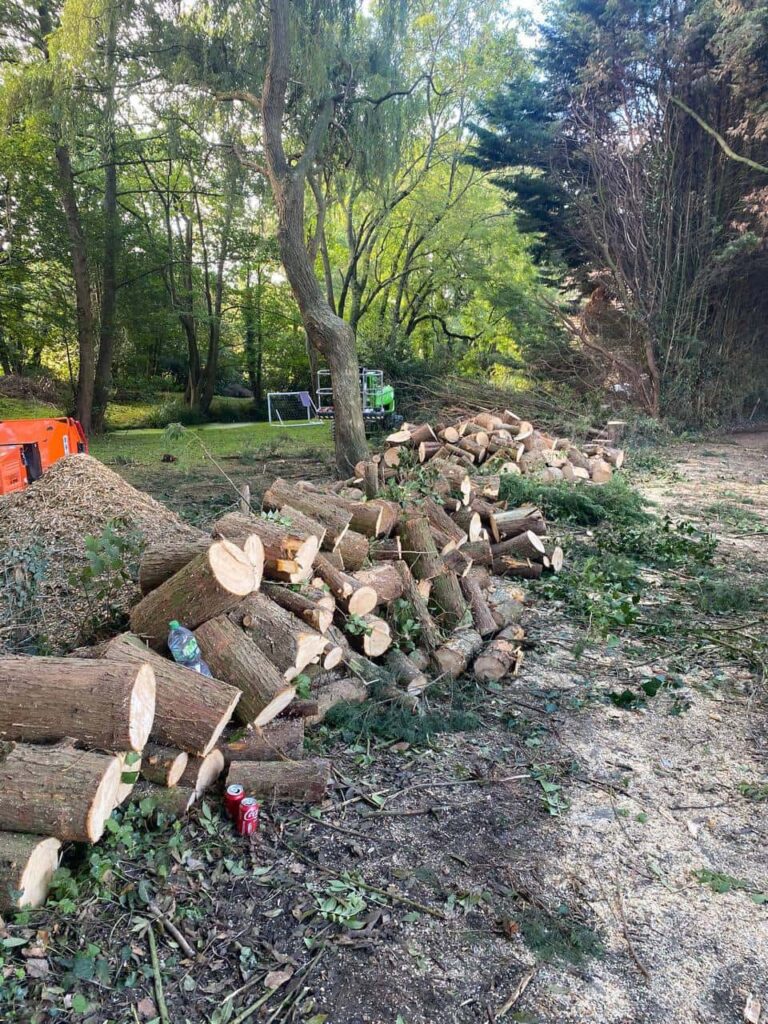Stump Grinding: Tips for Selecting the Right Grinding Depth
Introduction: Stump grinding is a common method for removing tree stumps from residential and commercial properties. One of the key considerations in the stump grinding process is selecting the appropriate grinding depth. Grinding too shallow may leave remnants of the stump behind, while grinding too deep can disrupt underground utilities or damage surrounding landscaping. This blog post discusses tips for selecting the right grinding depth to ensure successful stump removal and minimise potential risks.
Assess Stump Size and Type:
- Before determining the grinding depth, assess the size and type of the stump. Larger stumps may require deeper grinding to ensure complete removal, while smaller stumps may be adequately addressed with shallower grinding. Additionally, consider the type of tree stump being removed, as hardwood stumps tend to be denser and may require deeper grinding than softwood stumps. By evaluating these factors, you can gauge the grinding depth needed for effective stump removal.
Consider Site Conditions:
- Evaluate the site conditions surrounding the stump, including underground utilities, nearby structures, and landscaping features. Shallow grinding is often recommended in areas with buried utilities or shallow roots to avoid damage. In contrast, deeper grinding may be necessary in open areas with ample clearance to ensure thorough stump removal. Consider any obstacles or constraints that may influence the selection of grinding depth and adjust accordingly to mitigate risks.
Aim for Below Ground Level:
- The primary goal of stump grinding is to grind the stump below ground level to eliminate visible remnants and prevent regrowth. Aim to grind the stump several inches below the surface to ensure complete removal and discourage future sprouting. Grinding below ground level also facilitates the reclamation of the area for landscaping or construction purposes, providing a clean and level surface for further development.
Gradually Adjust Grinding Depth:
- Start by setting the grinding depth slightly above ground level and gradually adjust as needed based on the size and density of the stump. Begin grinding in small increments, monitoring the progress to determine if additional depth is required. Avoid grinding too deep initially, as this can increase the risk of damaging underground utilities or causing unintended disruptions. By gradually adjusting the grinding depth, you can achieve optimal results while minimising potential hazards.
Prioritise Safety:
- Safety should always be a top priority when selecting the grinding depth for stump removal. Exercise caution to avoid damaging nearby structures, utilities, or landscaping features. If the appropriate grinding depth is uncertain, consult a professional tree surgeon who can assess the site conditions and recommend the most suitable approach. Investing in professional stump grinding services ensures safe and efficient removal while mitigating risks associated with incorrect grinding depths.
Conclusion: Selecting the right grinding depth is essential for successful stump removal and minimising risks during the grinding process. Property owners can achieve effective stump removal outcomes by assessing stump size and type, considering site conditions, aiming for below-ground-level grinding, gradually adjusting depth, and prioritising safety. When in doubt, enlist the expertise of professional tree surgeons who can provide guidance and ensure safe and reliable stump grinding services. With careful consideration and proper technique, property owners can efficiently remove tree stumps and reclaim their outdoor spaces with confidence.
Call us on: 01767 668 993
Click here to find out more about Sandy Tree Surgeons
Click here to complete our contact form and see how we can help with your tree’s needs.

